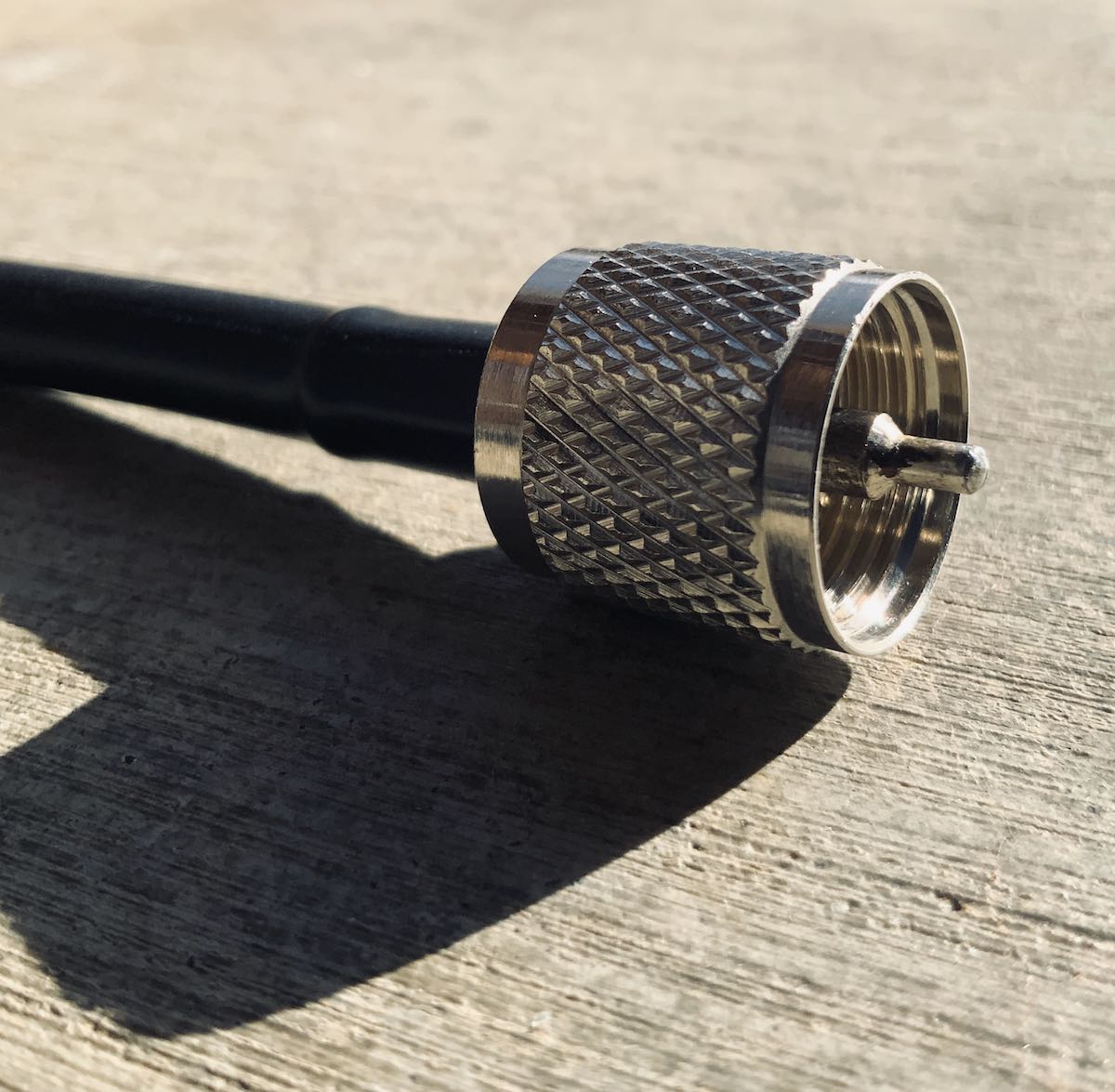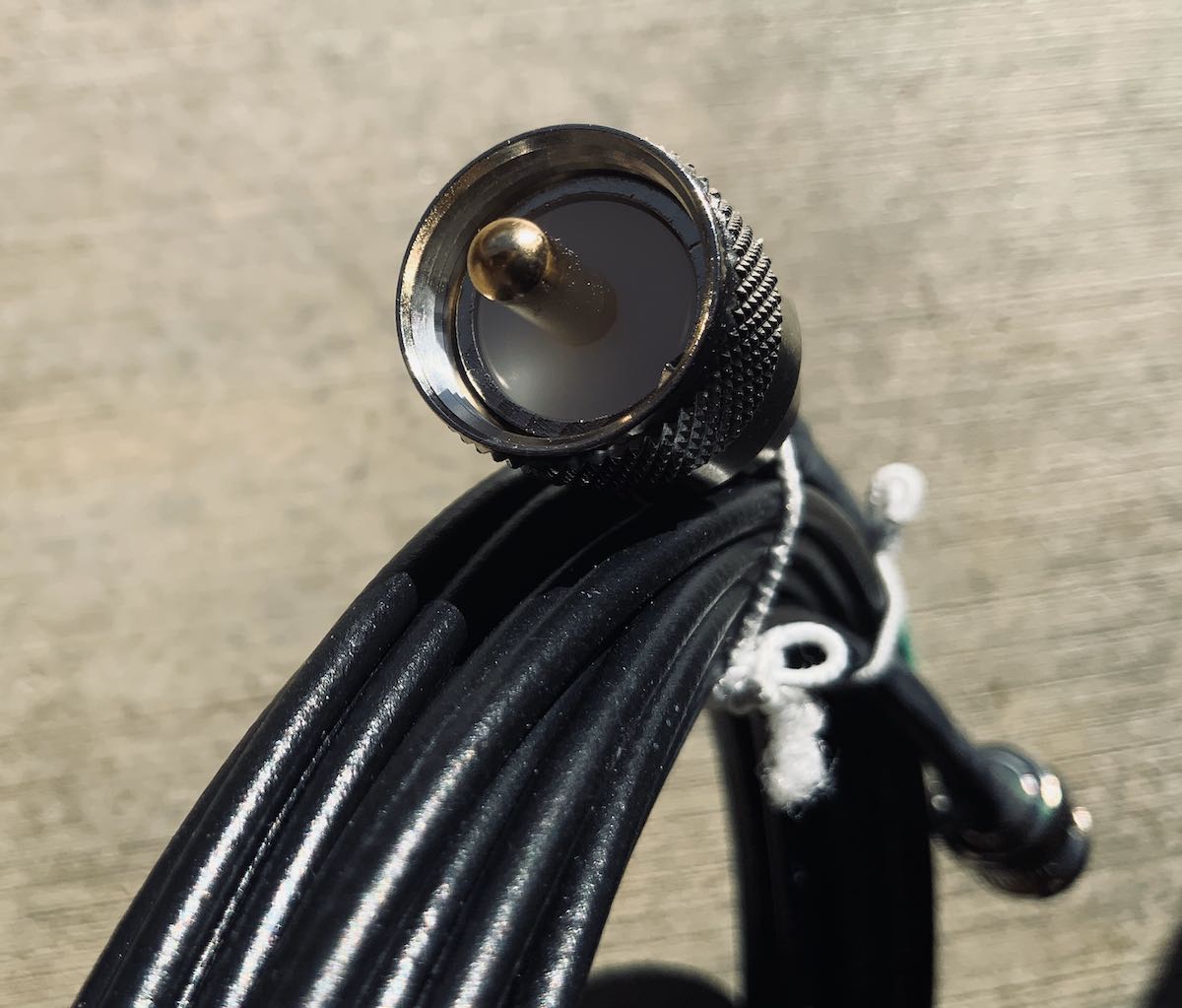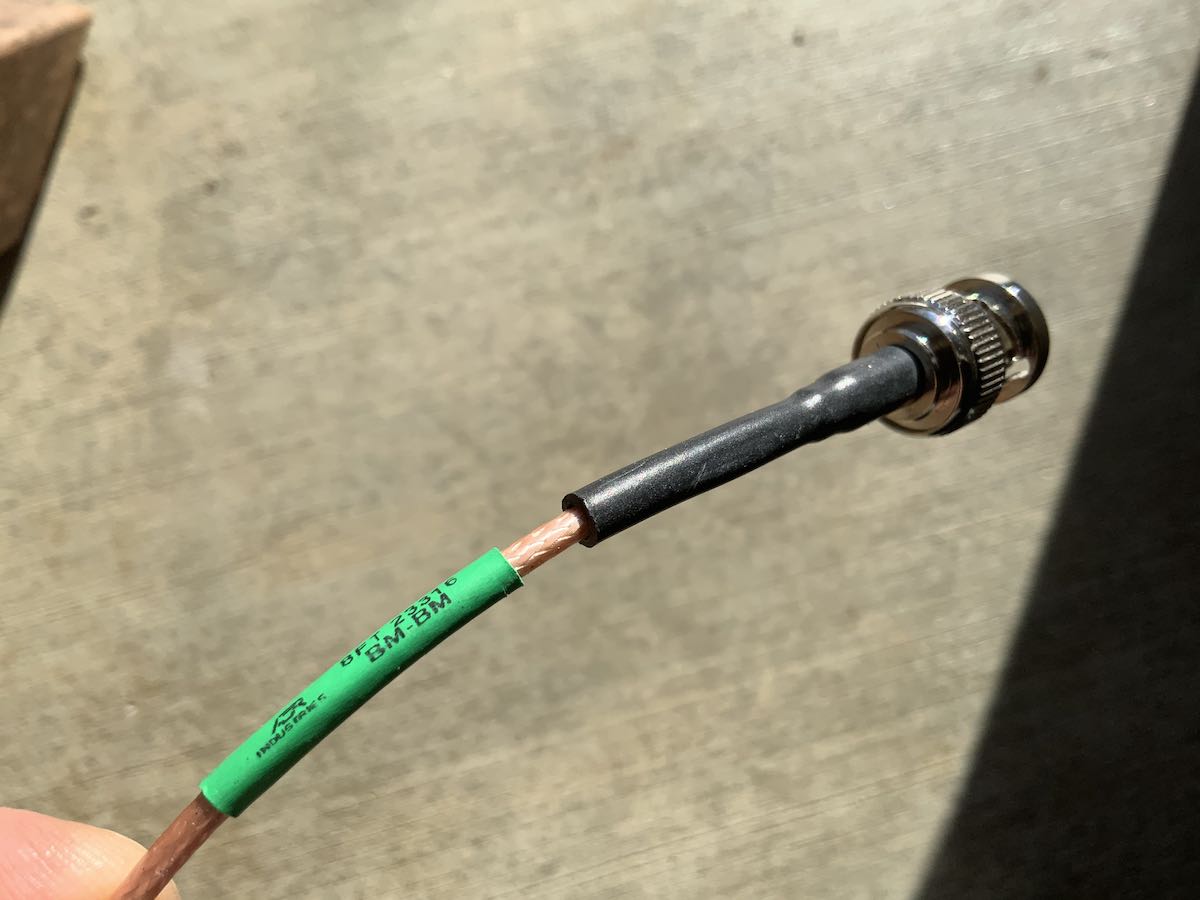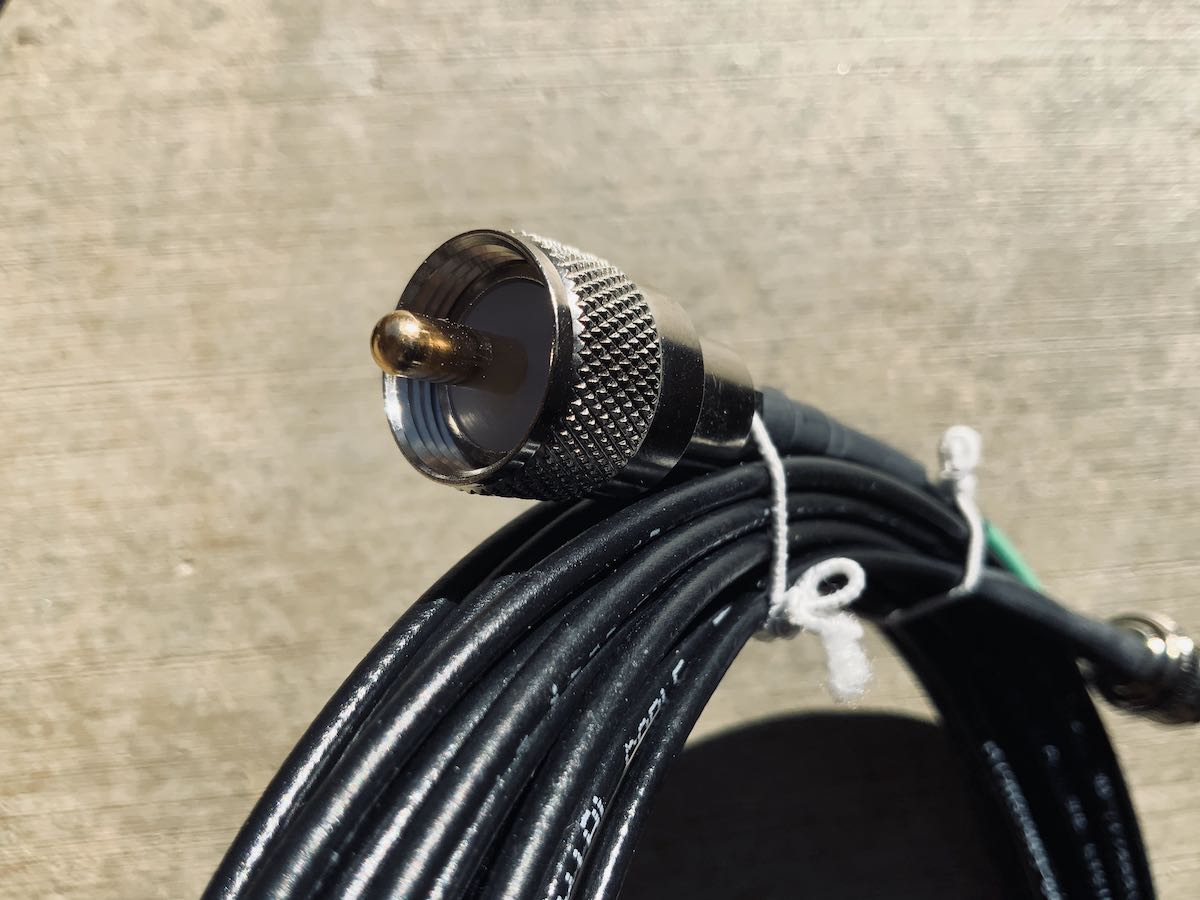 Two radio accessories I often forget to mention in my posts and reviews are cable and connectors. When a cable functions well, it’s taken for granted and easily overlooked.
Two radio accessories I often forget to mention in my posts and reviews are cable and connectors. When a cable functions well, it’s taken for granted and easily overlooked.
You’ll hear me say that a radio is only as good as its antenna and while that’s true, the important link in the system is your antenna cable and connectors. If you have a fabulous antenna and a benchmark radio, but you connect the two with substandard cables, it will create unnecessary losses and even shorts if you’re not careful.
But let’s be honest: it’s easy to cheap out on cables.
When I first started using tabletop receivers and transceivers in my youth, I had a tight budget. When I would go to a local hamfest where I’d find excellent prices on cable assemblies from those accessory retailers who sell a little bit of everything. You know…the tables with everything from $10 multimeters to $5 blinking lights–? I’d find their prices for cable assemblies too attractive and would grab them.
No more.
Back when I owned my original Yaesu FT-817, I used one of these cables on Field Day and blew my finals due to a small short ono a connector end (if memory serves, braiding was touching the conductor). From that point forward, I decided I’d invest in quality cables.
ABR Industries
At the Hamvention in 2010, I found ABR Industries’ table. The only thing they had on display were cable assemblies and a handful of cable accessories. I picked one cable up and inspected it–I could tell it was good quality. Although I know how to make my own cable assemblies (with PL-259s, at least) I appreciate professionally-built assemblies.
I spoke with the representative that day and learned about their company and how they go about making standard and custom cable assemblies in the USA for the consumer, commercial, and government markets.
Although the price was at least double what I would have paid at one of the discount retailers, I never looked back.
From that point forward, I’ve only purchased ABR cables typically at Hamvention, Universal Radio, or even directly from ABR’s website (when I ordered custom assemblies).
The quality of ABR cables is second to none. I have never had one fail at home or (especially) in the field.
For my QRP POTA activations, I started investing in ABR316 and ABR100 BNC to BNC assemblies. I’m especially fond of the ABR316 assemblies (above) because they’re so resistant to memory when I coil them.
You pay for what you get
I suppose this is on my mind because I’m about to do an assessment and make another ABR order so that my new field radio kits have their own dedicated cable assemblies with correct ends (so I’m also not forced to use BNC or PL adapters for matching).
I’m also replacing some of my 3 foot cable assemblies with SMA connectors to PL-259 for my bank of SDRs. This is a part of achieving one of my goals for 2021. I’ll know then that each receiver will have a quality link to my antenna splitter and antenna.
My point here is don’t skimp on your cable, adapters, or cable assemblies.
If you have the skill to build your own, buy quality components and take your time building them.
If you prefer purchasing pre-made cable assemblies, talk with your local ham radio retailer, or seek out cable assembly houses like ABR Industries. I’d avoid purchasing cheap cables you may find on eBay or Amazon.com, for example. That’s not to say that there aren’t quality discount assemblies out there, I just prefer buying from a company that takes pride in their work and stands behind the quality.
Click here to check out ABR Industries.
ABR Industries isn’t a sponsor of the SWLing Post (although I’d love to add them!)–I’m just a long-time customer who is happy to plug their products. I can recommend them without reservation.
[Update: In August 2023, we did become an affiliate of ABR Industries. Purchasing with our links supports the SWLing Post at no cost to you.]
I’ve also bought numerous long cable runs, wire, DC cable, ladder line, paracord, and sealant from The Wireman. I also highly recommend them.
ABR isn’t the only quality cable assembly house–there are many others throughout the world. Who do you recommend? Please leave a comment and links to your picks!





I want to buy some jumpers for my radio room. I can go to their site and build whatever I want – cable type, connector type (different on each end if I want), custom shrink wrap labels (nice!) .., but … What I don’t see is specifications for the different types of cables! Am I missing something?
Help a brother out and point me to the specs list! 😀
OK, OK. Getting stupid in my old age – https://abrind.com/data-sheets/
Right there under my nose
Another aspect to care is the cable layout, abruptly bending a coax 90° is something which must absolutely be avoided, sure, for rx only feedlines it may be acceptable at times, but I believe it’s always better laying the coax so that it bends in a large, smooth curve
I have been pleased with coax assemblies from MPD Digital in Albany GA. ( https://usacoax.com ), especially the Times-Microwave brand they carry like LMR-240UF (ultraflex).
I currently love Times-Microwave LMR-100a for shorter cable runs (thin solid conductor with a foil shield). Finding a good custom assembly is harder. The Antenna Farm carries it whom I have used before ( https://www.theantennafarm.com/catalog/ ). Hopefully the owner will stay healthy! So many of these small companies are run by elderly owners ready for retirement.
It really can matter, I once ordered (from an eBay vendor) a right-angle BNC connector/cable assembly and it failed the first time I used it. Don’t skimp on antenna assemblies. Whether analog or digital, Antennas are forever, electronics & modes, not so much.
Universal Radio, was my go-to- place for connectors and cable but tis not anymore,sorry to say. Thanks Thomas for the info, that is new to me,I will certainly try them for my next order,when needed !
Messi & Paoloni
Anyone know why the center of the pl-259 on ABR fittings has that downsized nipple thing? Why is it like that?
Somebody – probably Amphenol or AIM/Cinch, since that’s what I usually buy – once gave a reason in some of their marketing lit. Can’t find it at the moment, but as I recall the explanation was essentially “for easier location when connecting”, with the added benefit that it wouldn’t distort the mating contact if the soldering of the end crept over the sides a bit. Or maybe visa-versa, I forget.
FWIW, Amphenol also do / did a series of UHF (PL-259 / SO-238) & mini-UHF connectors where the plug had a long-ish taper on the end.
I’ve also seen cheap ones where that reduced nose was meant for crimping to the centre conductor.
Jeff, Rob and Michael,
Hey thanks for all that information guys, need to do some reading here.
Transmission lines, patch cables, and other such seemingly mundane things are usually the source of endless pain for those who do not understand what a difference they can make.
It’s not just about loss, it’s about durability, bending radius, and how many times a connector can be used before it is worn out. The coax loss gets more prominent as frequency increases, particularly for VHF and UHF purposes.
As my mentors said, before investing in a radio be sure to invest in an antenna. After the antenna, be sure to spend your money on transmission line. THEN put your money in the radio.
Spot on, Jacob!
Hi Thomas,
Great post! Thanks for the reminder of the importance of quality cable.
This article on the Bonito web site is also a very good read: https://www.bonito.net/newsroom/why-even-good-antennas-need-good-coax-cable/?lang=en
The article mentions two excellent cables, one from Belden and another from the Italian coax manufacturer Messi & Paoloni. Some day I want to import a length of the M&P cable… their products appear superb. Here’s the ham radio section of their site: https://messi.it/en/catalogue/50-ohm-cables-ham-radio.htm
Messi & Paoloni is 30 km from my home 🙂
oh and check their connectors too, their UHF connectors are outstanding
other good ones are Belden and The Wireman ones, the latter is also a good pick for “open” feedlines
Wow, Andrew! Next time you’re over there, pick us up a box full of assemblies! 🙂
pick the one you need
https://messi.it/en/comparison-chart-50-ohm-cables.htm
🙂
Nice! 🙂
I met M&P at WRTC 2018. Great guys and very helpful.
So I want to ask a question here.
I know the type/quality of the coax affects line transmission efficiency and is frequency-dependent but what about connectors, e.g. PL259 vs. SMA vs. BNC vs. Type N etc.
Do they exhibit any differences with respect to frequency etc?
Absolutely there are differences among the various types of common coaxial connectors, especially signal loss as frequency increases. This website has an excellent summary, including pictures of each connector and the recommended maximum frequency of use: http://ecee.colorado.edu/~kuester/Coax/connchart.htm
Also, everything said in the article about cable also applies to connectors. There are cheap ones you should avoid and high quality connectors that can last a lifetime.
No significant differences at HF and down, maybe a little in VHF, and it starts to get noticeable in UHF. FWIW, at least up through the ham 440 band PL259 is in common use and seems to work well enough.
Here’s a good write-up *with data*: https://www.hamradio.me/connectors/uhf-connector-test-results.html
Connector quality is more important than type, and have as few connectors as possible. This PDF will probably answer every question, starting at page 57: https://www.fclane.com/sites/default/files/rfguideen.pdf
Bookmarked!
Thanks Thomas
It really is not that easy to build a reliable cable. It starts with the correct connectors and does not end with the correct mounting tools.
Quite often we experiment – that is the soul of amateur radio. But especially for portable or mobile use some long-term solution is better – especially if you have no spare parts and tools around.
I still remember a holiday more than 10 years ago: During the final tweaks of my station the FT-817 final blew. Not a single QSO during the whole stay!